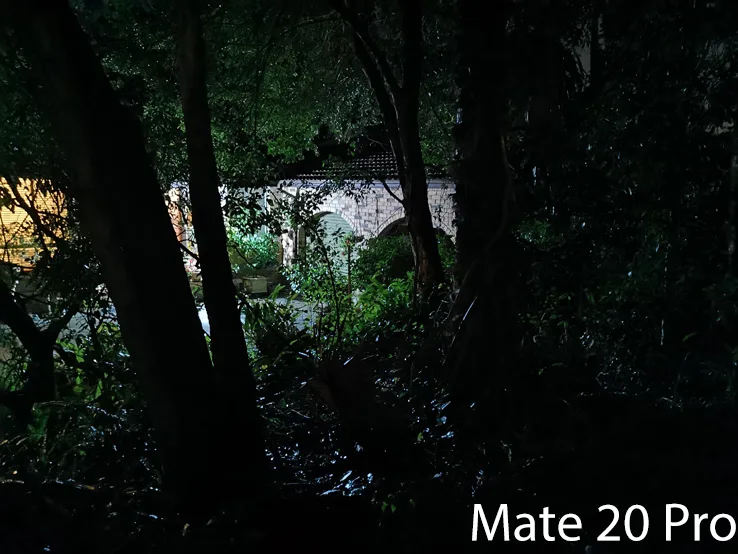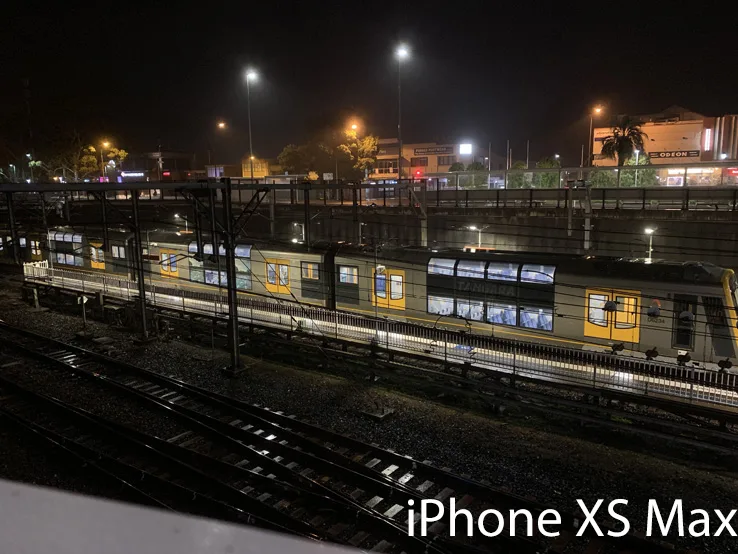
I'm in the middle of putting together our comprehensive Samsung Galaxy S10+ review – stay tuned for that one – but a big part of that testing process involves putting its camera through its paces.
Smartphone camera technology, especially at the premium end of the market is a fierce contest and a rapidly moving one at that. Just about any smartphone camera can deliver generally pleasing results in fine light and with little in the way of movement. That's not much of a test in and of itself.
However, in low light, the smaller sensor sizes, differences in apertures and even software AI algorithms can play a huge role in producing images you'd be happy to keep and share. The Samsung Galaxy S10+ doesn't exist in a vacuum, so it made sense to pit it against as many flagships as I could muster. That's a straight up comparison, which is exactly what we do here at Finder, whether you're after a new mobile plan, new health insurance plan or a new credit card.
With that in mind, I set out late one night with a bag stuffed with premium phones and a fervent hope that no muggers were following me.
Specifically, I shot with a Samsung Galaxy S10+, an Apple iPhone XS Max, a Huawei Mate 20 Pro, a Google Pixel 3 and a Samsung Galaxy S9+. All phones were running on the latest available software updates using their respective default camera applications. The app itself was allowed to pick focus point and exposure for every shot. You could tweak that to effect, but the reality for most everyday smartphone camera users is that they just want to point and shoot.
Driveway test
Low light doesn't automatically mean pitch black. You're more likely to have a mix of light sources and lit and dark areas, which is what I wanted to test with each shot.

The Galaxy S10+ did a good job of capturing both the background detail and a little of the trees in front, for an overall good composition.
![]()
The Pixel 3's night sight mode did a good job with adding colour detail to the shot.

The Mate 20 Pro didn't capture as much front-facing detail, although the focus on the bricks in the background is pleasingly sharp.

The Galaxy S9+ doesn't have a multi-exposure shot mode; it just opens up its aperture and does its best. It's not quite up to the Galaxy S10+, but it's still a decent shot.

The iPhone XS Max struggles relative to its competitors, with a lot more missed detail in the darker areas of the shot.
Park test
Next, on to a local park. Yes, it's very weird to be hanging around a local park in the middle of the night, but it's also a good way to really torture a camera sensor to see just how much detail it can really pick up anyway.

The night mode on the Galaxy S10+ kicked in immediately upon being opened, delivering a very good shot under some quite brutal circumstances. There wasn't as much light in this shot to the naked eye, and the S10+ managed very well indeed.

The Mate 20 Pro showed its low light muscle, but not to the same extent as that on the Samsung Galaxy S10+.
![]()
To give you an idea of how dark it actually was, this is how the Pixel 3 took its photo without using Night Sight – which, to be fair, it suggested I use as soon as it saw what I wanted to take a photo of.
![]()
Not surprisingly, the Pixel 3 with night sight enabled takes a much better photo.

The Galaxy S9+ struggled a lot with this shot, but again it doesn't do a multi-exposure shot the way other cameras in this test do.

Still, the iPhone XS Max delivered the most murky shot of the lot. It's not an exciting composition, to be sure.
Now, possibly because I was torturing these poor phones, nature decided to have its own fun with me by upping the difficulty challenge and hammering down with rain. That's a bigger challenge for any smartphone, partly because you've got to keep the lenses dry, but also because the rain itself affects each picture.
Train test
At a nearby train station, I gave each camera a lot more light to play with, in order to see how each phone would interpret the scene in front of them. Alright, OK, it was also because it provided me with protection from the elements. All of these phones are at least IP67 rated, but it's no fun lugging around flagship phones in the cold, wet night.

This was ultimately the one test where every phone delivered a pleasing and largely similar shot. The Galaxy S10+ has nice detail on the empty tracks at the front of the shot, as well as a clearer set of overhead lights than most other phones.

The Huawei Mate 20 Pro was the runner up by a very small margin over other phones for the way it handled the overall shot.

The iPhone XS Max does well for the most part, although it has the murkiest set of overhead lights of any shot in the series.

The S9+ makes a nice composition, picking up more foreground detail in the gravel than the XS Max.
![]()
The Pixel 3 mostly handles it nicely, although as is common with many Pixel 3 shots, you're trusting to its AI for overall colour balance, which can lead to some slightly over-saturated tones.
Road test
The same bridge that afforded me a (somewhat) protected view of the train station also allowed me to photograph a very wet, very dark road. Again, there are only small levels of difference between each camera's composition of the shot.


![]()


Fountain test
Finally, a local landmark fountain that may, in some bizarre way also be a clock, but only in a certain light. I didn't have that much to begin with, although the rain here did mean there really weren't many people getting in the shot.


![]()


Conclusions
The reality for any flagship phone is that if you've got the time and patience, you can turn out some pretty impressive shots. However, most of us just want to capture the moment and move on, and in low light that can be quite challenging.
Here, the Samsung Galaxy S10+ acquits itself well, with images that stack up very nicely against the already impressive Huawei Mate 20 Pro.
The Pixel 3 gives impressive photos for a single lens camera, but that lack of lens choice is somewhat stifling if you did want a zoom or wide option to speak of, and its night sight features can sometimes oversaturate images.
If you're a Galaxy S9+ owner with a particular passion for photography, the differences between the S9+ and the S10+ are quite stark, but realistically you're still holding a very good camera in your hands, if not quite the best.
The iPhone XS Max provided nice colour in its photos, but it's quite clear that it struggled the most with low light situations. If you're an iOS diehard it's your best option by far, but it's clear that Apple needs to do some serious hardware and software work to truly compete here.
Compare camera phones
Latest mobile phones headlines
-
Best iPhone deals available online in Australia December 2025
17 Jul 2025 |
-
Where to buy the Apple iPhone 16 in Australia
13 Sep 2024 |
-
The best budget phones in Australia for 2025
22 Sep 2025 |
-
Where to buy the Samsung Galaxy S24 in Australia
04 Apr 2024 |
-
Where to buy the Apple iPhone 15 in Australia
18 Sep 2023 |
More guides on Finder Shopping
-
Best iPhone deals available online in Australia December 2025
Here's a comprehensive run-down of the best iPhone deals you can get right now in Australia.
-
The best budget phones in Australia for 2025
Our expert team has tested hundreds of mobile phones to find the 11 best options under $500.
-
Best dual SIM phones in Australia
If you’re looking to run multiple phone numbers from just one handset, we’ve got the best picks for every price bracket and need.
-
Best flip phones in Australia 2025
These are the 4 best flip phones you can buy right now in Australia.
-
The best Android phones of 2025
We've spent the time comparing Android phones to find out which is the best one you can buy in Australia in 2023.
-
Camera Shootout: Galaxy S10+ vs iPhone XS Max vs Huawei P30 Pro vs Huawei Mate 20 Pro vs Pixel 3
We hit the streets of Paris and Sydney to find the low light camera king, with surprising results.
-
Which phones have wireless charging?
Everything you need to know about wireless charging and the phones that support this super-convenient way to keep the power flowing to your handset.
-
Top sites to buy mobile phones online
See the online stores offering an unrivalled selection of mobile phone models.
-
What resolution does my phone camera actually need?
Not sure what resolution you need on your phone's camera? This guide explains the features you really need to check on your smartphone.
-
The 10 best phones in Australia 2025
We've ranked the top 10 smartphones you can buy in Australia right now based on hundreds of hours of hands-on testing.
